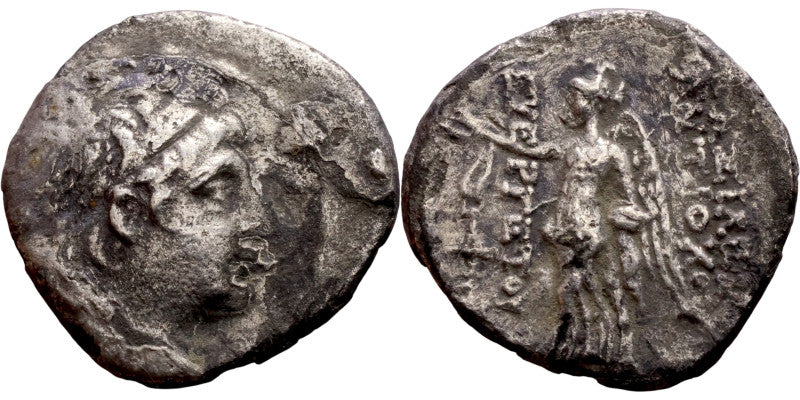Antiochos VII (Seleukid King: 138-129 BC). Drachma featuring Nike
Antiochos VII (Seleukid King: 138-129 BC). Drachma featuring Nike
Antiochos VII (Seleukid King: 138-129 BC). Drachma
Obverse: Bust of king.
Reverse: Nike walking to the left, holding a wreath.
18mm 3.38g

Nike is seen with wings in most statues and paintings. Most other winged deities in the Greek pantheon had shed their wings by Classical times. Nike is the goddess of strength, speed, and victory. Nike was a very close acquaintance of Athena, and is thought to have stood in Athena's outstretched hand in the statue of Athena located in the Parthenon. Nike is one of the most commonly portrayed figures on Greek coins.
Product features
Product features
Materials and care
Materials and care
Merchandising tips
Merchandising tips
Share

